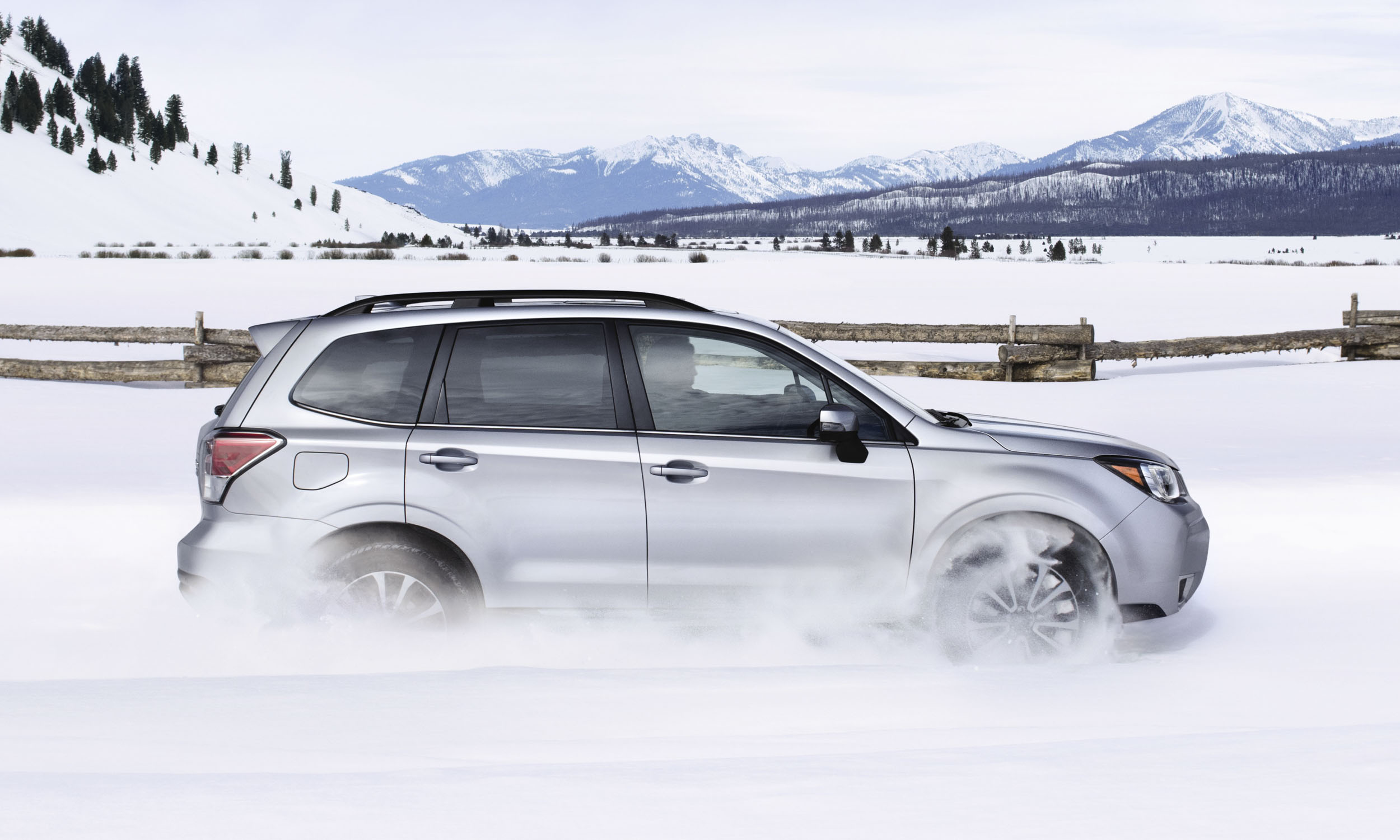
Driving can get sketchy when winter weather hits, but a prepared vehicle is better equipped to meet foul-weather challenges, instill confidence and composure in a driver, and last through long months of bitter elements. We’ve compiled a dozen simple yet impactful maintenance procedures that make a great to-do list. Keep these top of mind and soon you’ll have a car equipped for all the rain, slush and snow Mother Nature can sling at it.

A vehicle’s paint bears the brunt of nasty winter weather, so make certain it’s ready for the abuse. Wash your car and liberally apply a coat of wax to preserve the paint, preventing it from oxidizing in the damp driving conditions of winter months. Consider applying a synthetic wax that uses polymers — not a natural carnauba-based wax — because these synthetic waxes, sometimes called sealants, last longer.
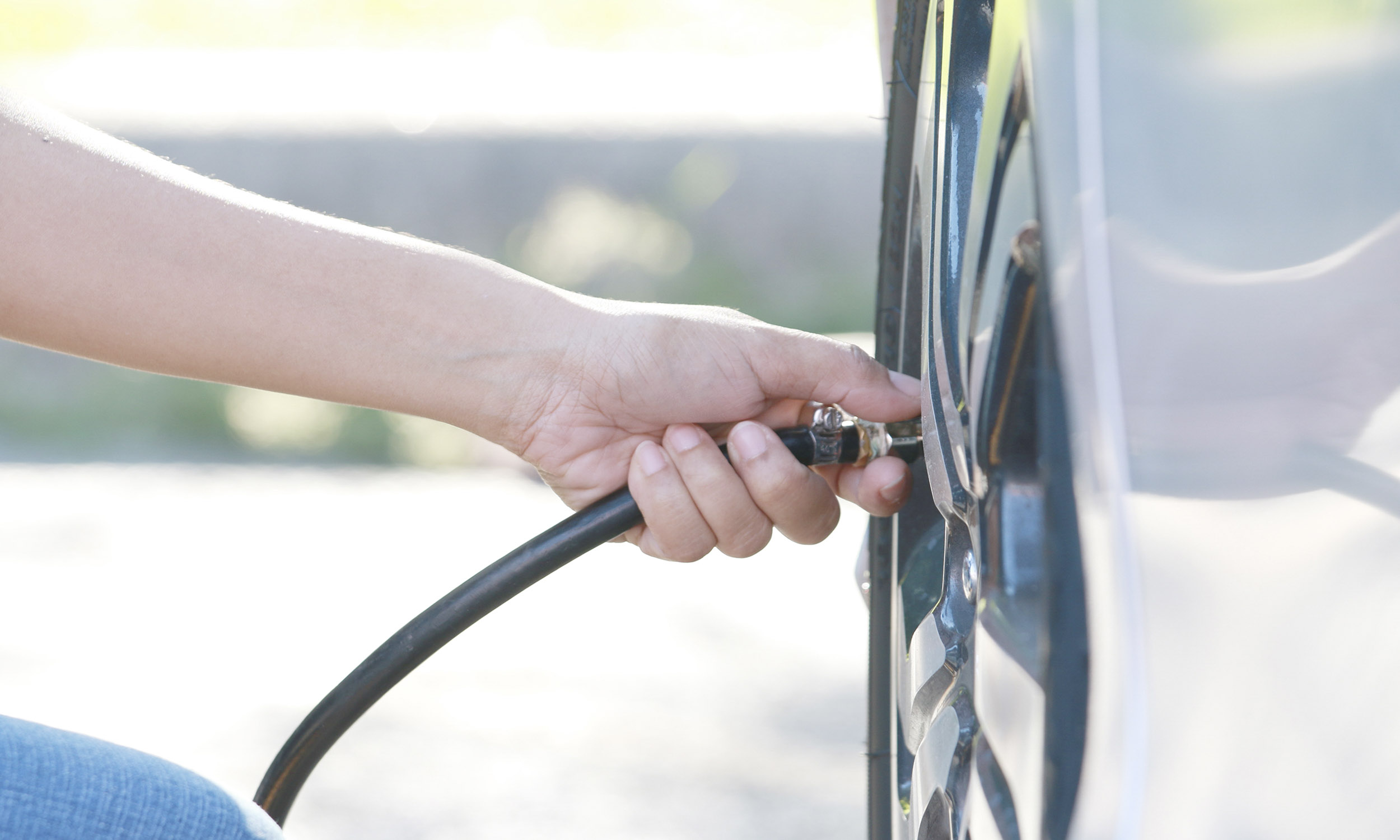
Road grip gets increasingly important as the mercury drops and streets get mucky. Therefore, tire care is critically important, and you need to look inside and outside your tires. Inside, it’s all about pressure. According to the American Automobile Association, as the outside temperature drops so will air pressure in your tires. The average rate of pressure drop is one psi for every 10-degree Fahrenheit reduction in temperature. Check all four tires as well as the spare, and do so periodically throughout the winter. Proper inflation rates can be found on a sticker affixed to the driver door jamb and/or in the vehicle’s owner’s manual.
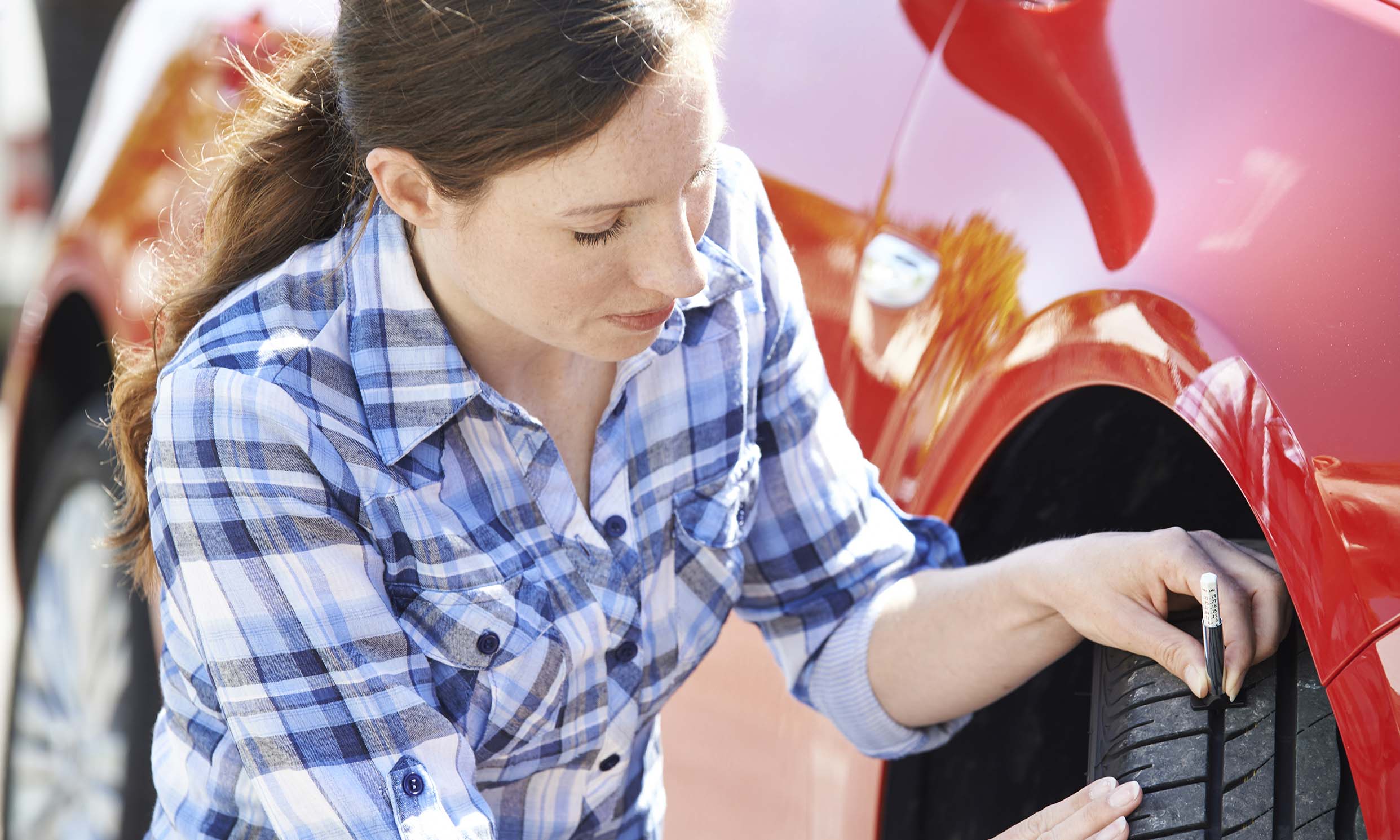
Looking at the outside of a tire, the focus should be on tread depth. The AAA recommends replacing a tire once it wears down to the point where the tread groove depth reaches 3/32 of an inch or less. The old method of seeing how worn a tire had become was via the “penny test” — stick a penny headfirst into the tread groove; if you could see the top of Abe Lincoln’s head, the tire was at 2/32 of an inch — already well below the acceptable depth. The modern “quarter test” follows the same premise, but the coin and president are different. Insert a quarter heads down into the tire groove. If you cannot see the top of Washington’s head you have at least 4/32 of tread depth left, so the tire is still good to go. If you can see the top of George’s head, you should start shopping for new tires. Perform the quarter test on the inside, middle, and outside of each tire. If one measurement comes up short, it’s tire replacement time.

Battery performance can be hindered by cold weather, and a previously borderline battery can quickly become unable to crank an engine in chillier temperatures. The first order of business is ensuring a battery’s power has a clear path to the starter. Battery terminals should be inspected for corrosion. If present, applying a 50/50 solution of baking soda and water and a quick scrub with a small, stiff brush will clean up corrosion. Also be sure terminal-to-post connections are tight. You also may want to check the battery voltage and charging system. In many cases this testing can be done for free at local repair outlets and auto parts stores. If a battery cannot hold sufficient charge, it is time for a replacement.
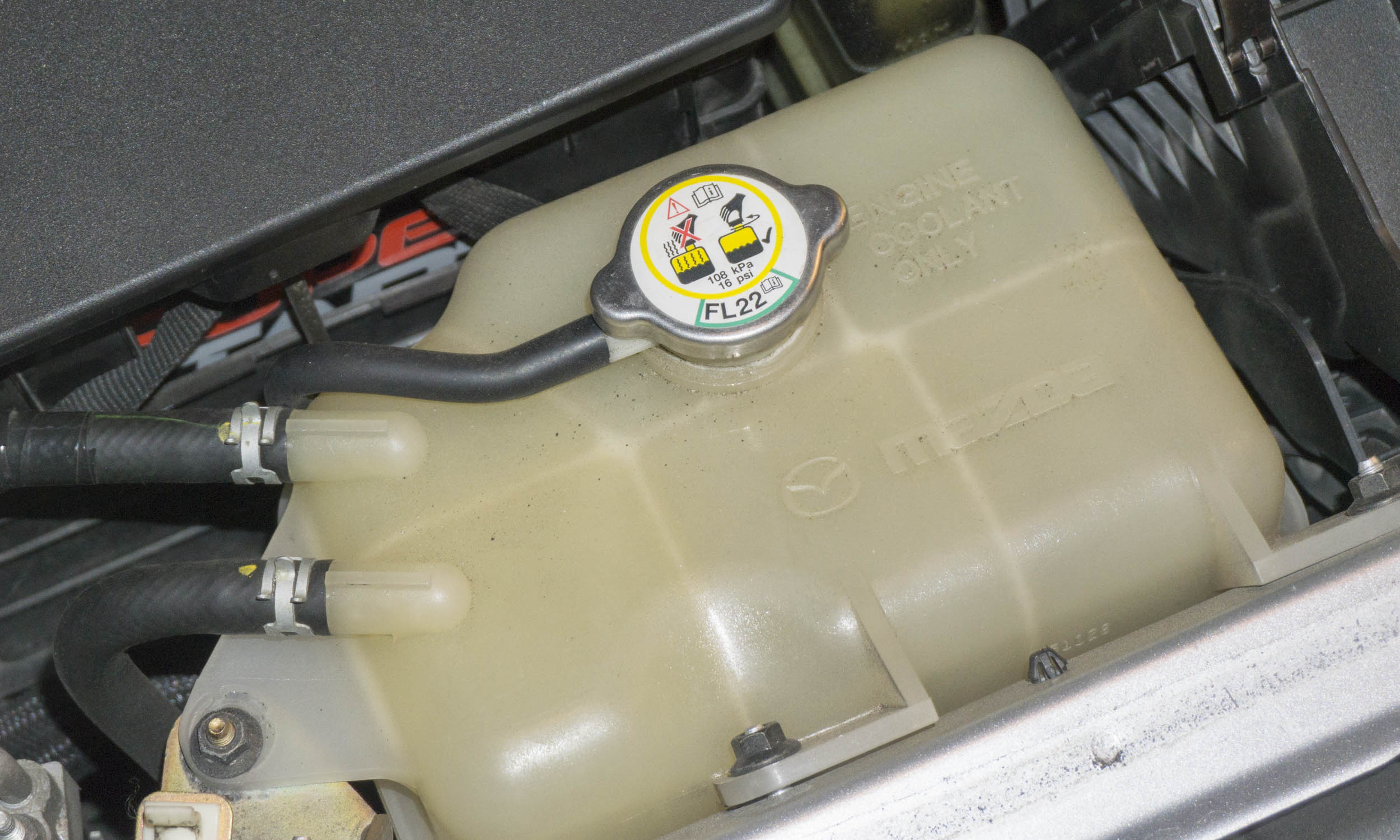
Too often we focus on overheating problems when it comes to radiator and coolant performance. But the stuff is also called antifreeze. In winter it’s all about the ratio between water and antifreeze. A 50/50 mix is recommended, but it’s okay to err on the side of the antifreeze. Coolant/antifreeze ratio testers can be found at any auto parts store or many local hardware stores; prices start around $5. Most look like a turkey baster with colored discs inside.
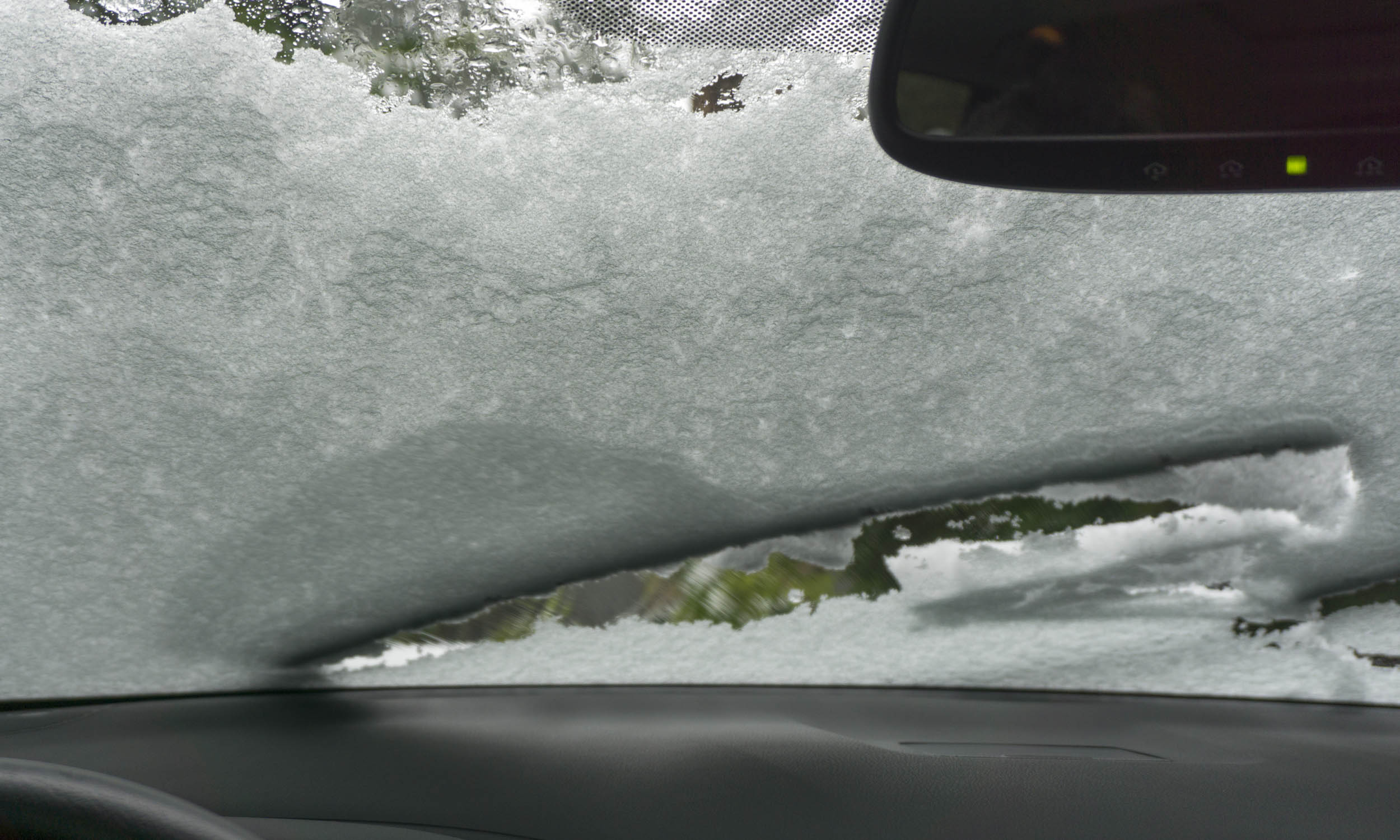
Outward visibility suffers profoundly as weather worsens, so properly functioning windshield wipers are vital for safe driving. To evaluate wiper performance, look for missed areas on the glass and a trail of streaks behind your wiper. If the blades do not clear all the moisture off the windshield in a single pass they are on their way out. Another overlooked item is winter formula washer fluid. This fluid gets blended with antifreeze ingredients, so it will be ready to spray all winter long — even at temperatures 20 degrees below zero.
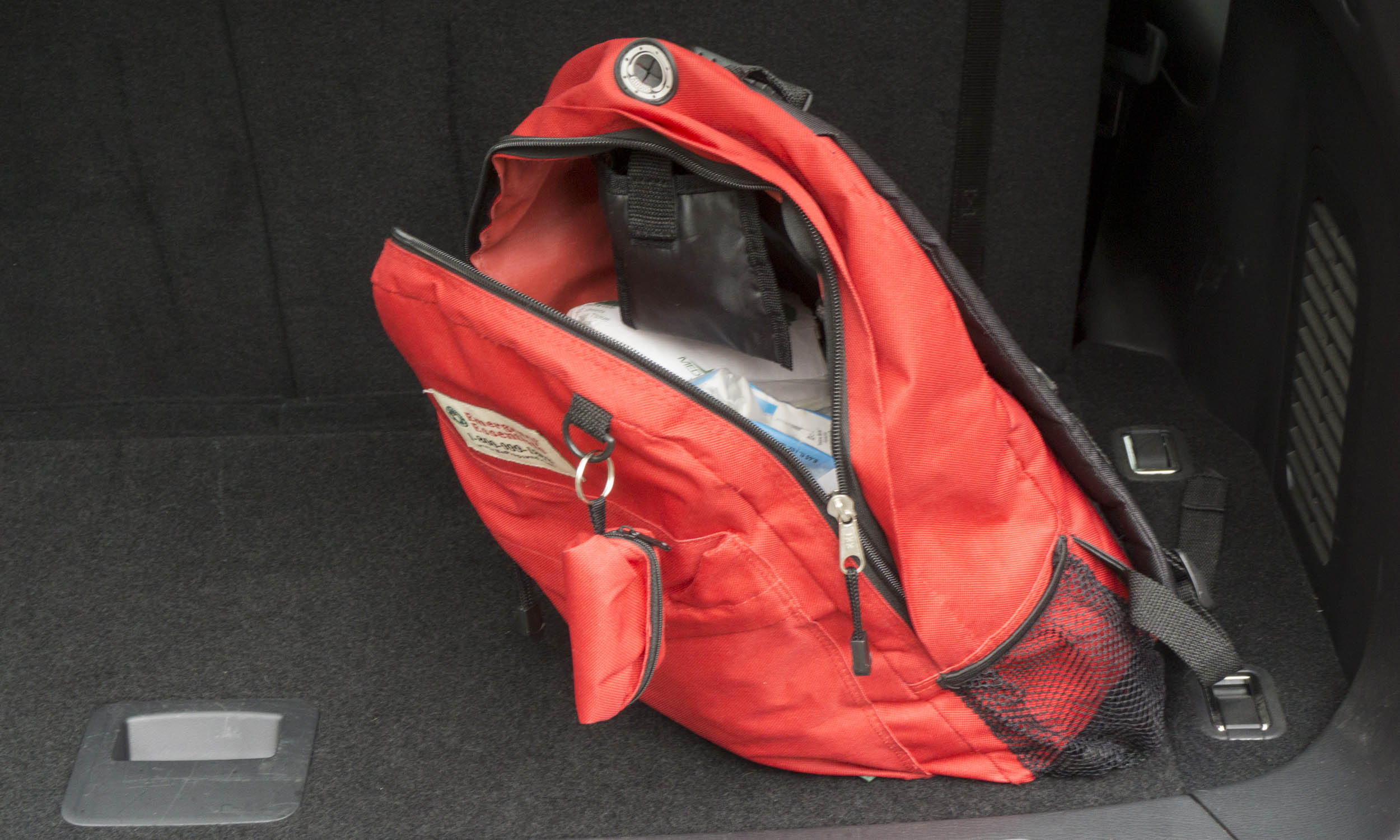
Put together a go-bag for worst-case scenarios. It can be a backpack or duffel and it should be filled with some necessities. A change of clothes, packaged camping ponchos, food such as granola bars or something that lasts and can be swapped out, blankets, a flashlight and batteries, a crank-powered radio, and anything you can foresee needing if you’re forced to spend a night in your vehicle are all great candidates for an emergency bag.
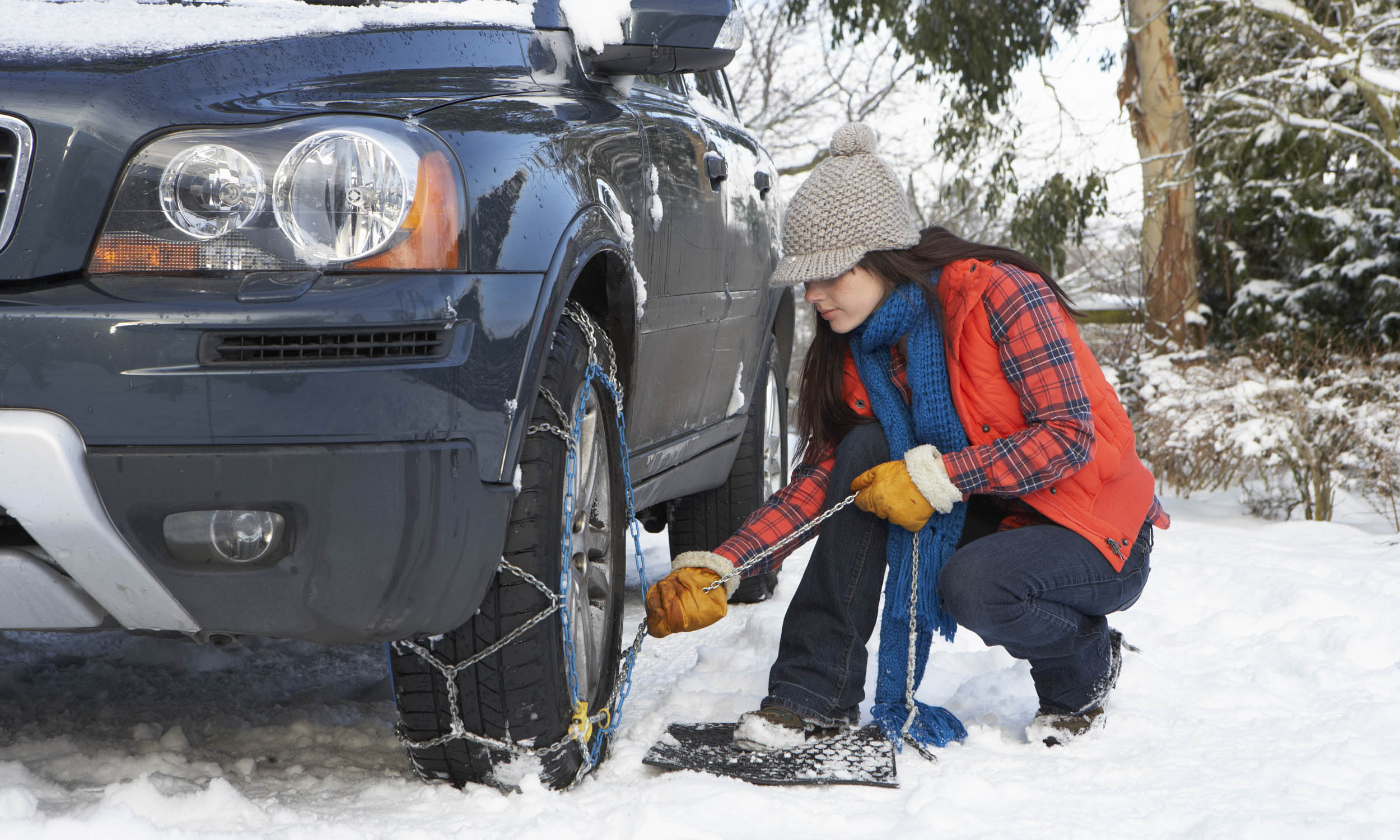
If you live in an area that experiences sub-freezing temperatures, consider packing chains or traction cables because bad weather moves fast, and you don’t want to be caught off guard when the mercury dips toward single digits. Chains are not a one-size-fits all proposition; they come in multiple sizes designed to fit specific tires. They also benefit from a practice-makes-perfect approach, so it’s wise to install and remove the chains in your driveway before you need them — so you have a handle on the procedure when you must do it for real in the heat (cold?) of battle.
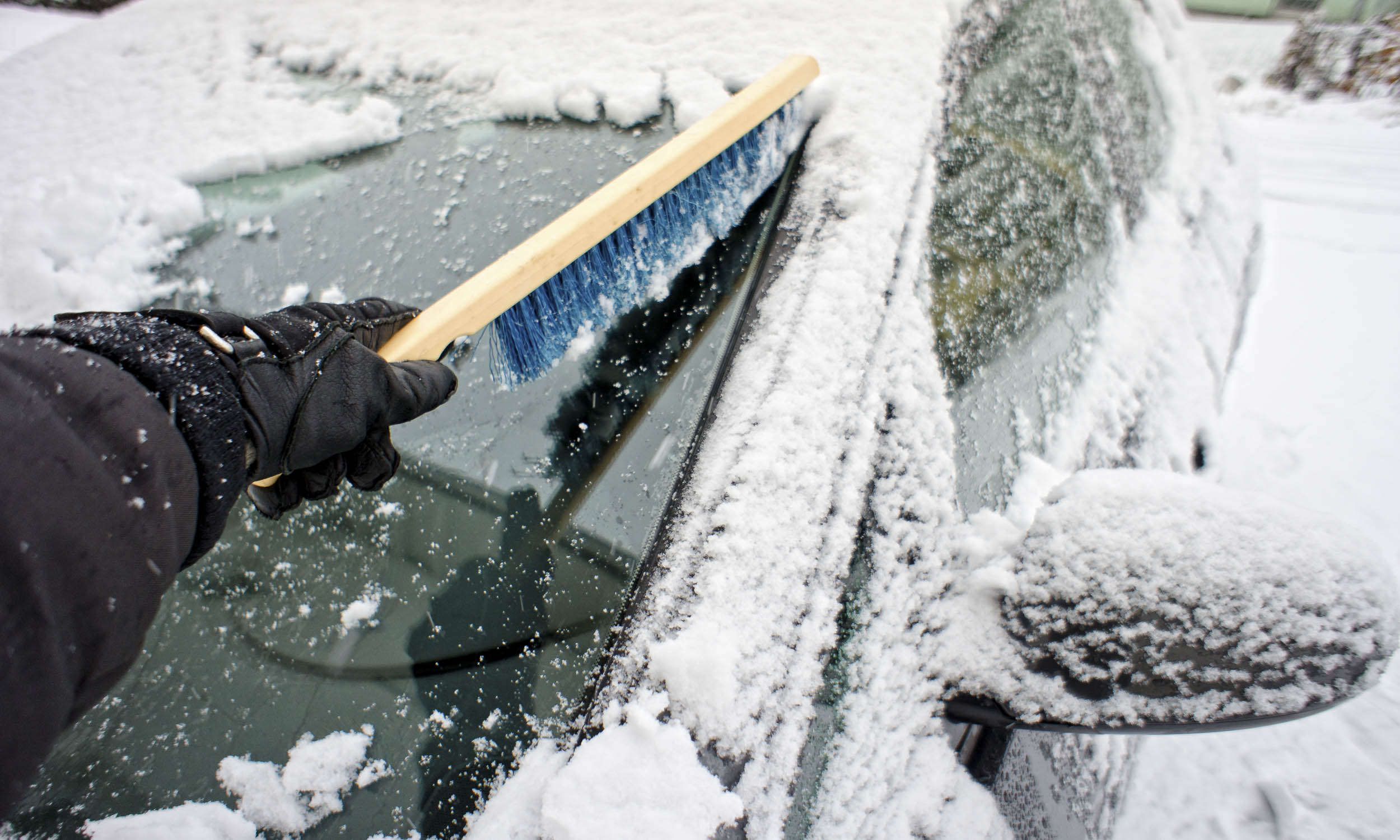
How many times have you used a credit card to scrape frost off your windshield, only to drive away hunched over and peering through a small clearing at the base of the glass? This is hazardous — limiting your sight lines is always unwise, but doing so in driving rain or snow flurries only compounds the danger. This may not seem like a big deal, but remember the consequences. Get a brush/scraper for every car you own.
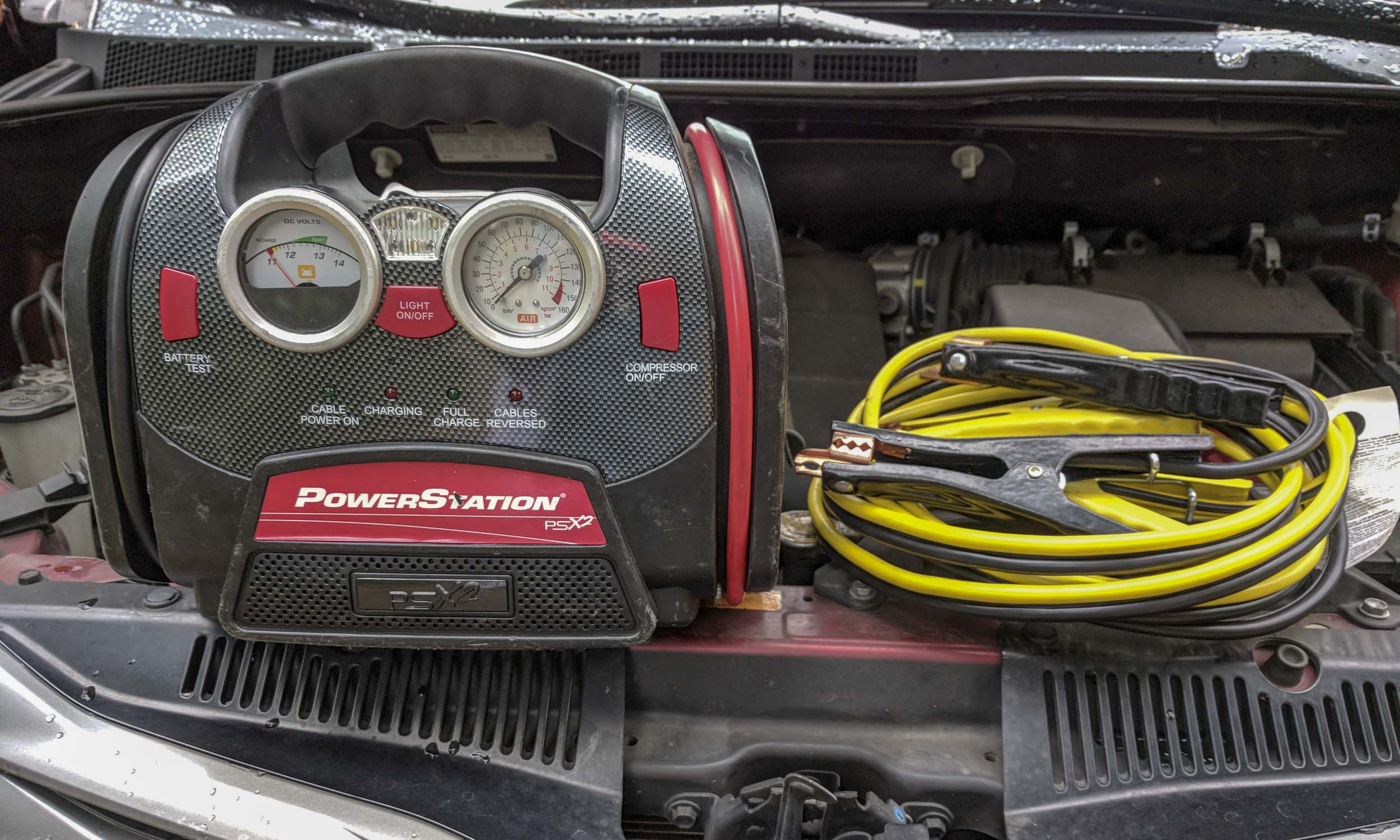
Turning the key and being greeted by nothing but crickets is no way to start your commute. Jumper cables connect the battery in an operational car to the dead battery in a stranded one so it can start. A jumper box combines a charged battery and the cables in one device so a second car is not needed. Boxes are the way to go. The latest boxes feature lithium-ion batteries that can jump multiple cars on a single charge, feature USB ports to charge cell phones or power 12-volt devices, and have self-contained LED flashlights.

Snow and rain can wreak havoc on your car’s carpeted floormats. Protect them with some plastic or rubber mats that are ready to take on the elements. Many all-weather mats have high sides to contain literally gallons of water, leaves, mud or errant beverages that may be spilled during drive times.
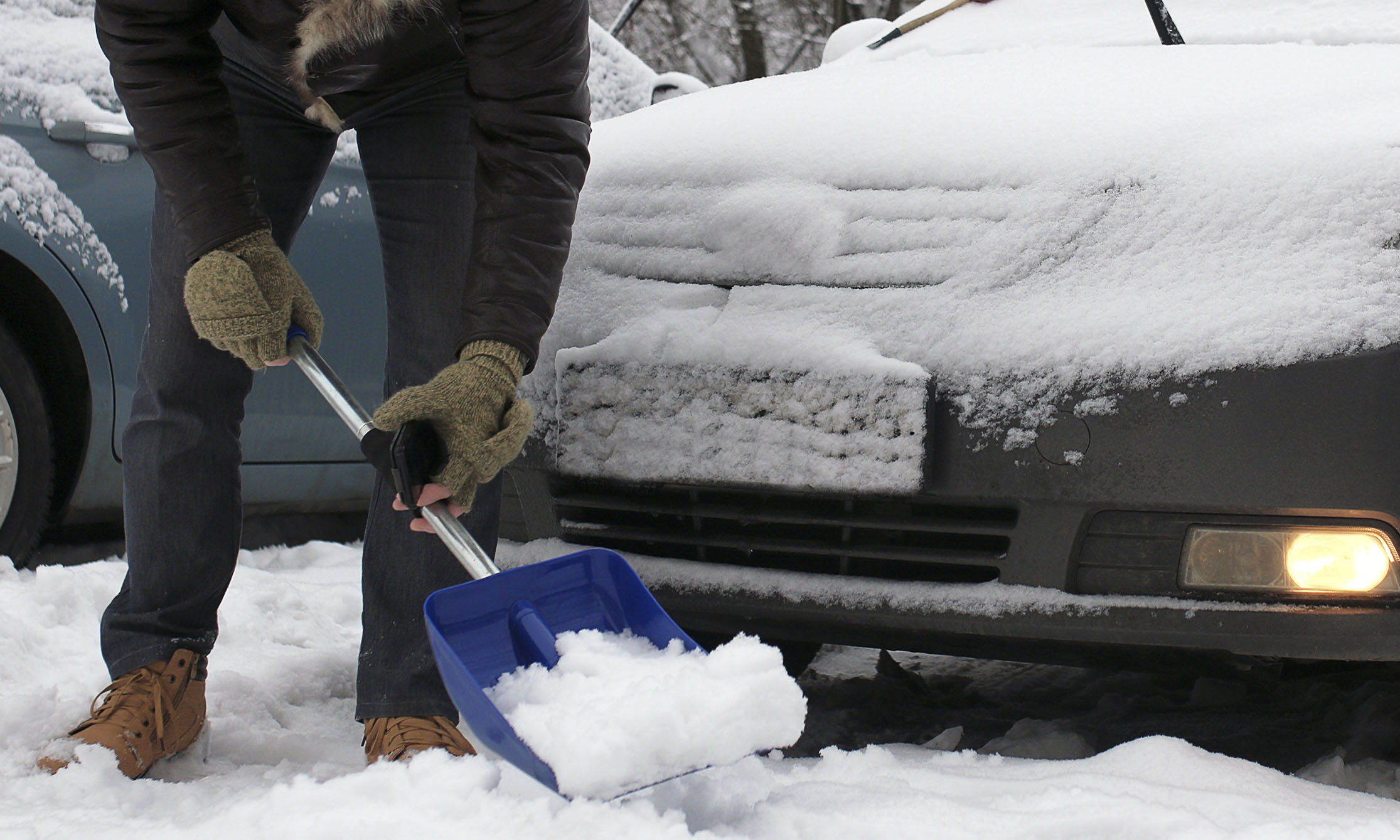
Stowing a shovel in the trunk can be invaluable if it starts snowing while your car is parked, and you then need to clear a path, or if you slide off the road and need to dig the wheels out. Opt for a small shovel with a foldable or telescopic handle that’s built for backpacking. Another option is a mini snow shovel designed to be used with — and stored in — vehicles.








